Racing has always played a large role in the automotive industry. Automakers love to boast about racing wins, competing in specific series, and all of their sponsorships. Beyond being a sport where the best drivers and teams are pitted against one another, modern racing is equally as competitive on the tech front. Car racing has evolved to be so much more than just watching fast cars drive around a track, so we put together this list of all the major types of auto racing that you can watch on TV and even take part in.
Car racing tends to be a global thing with races being held around the world at some of the most historic racing tracks. On this list, you’ll find everything from iconic 24-hour races to quarter-mile drag races. Unfortunately, while these are all the major types of car racing, a lot of series aren’t readily available to watch in the U.S. For car enthusiasts in America, you’ll be able to find NASCAR, drag racing, and Global Rallycross (GRC) readily available on television. If you’re really looking into racing, there are a few series that you can even compete in.
Open-Wheel
Open-wheel racing is the first thing that comes to people’s minds when they think about car racing. This is the pinnacle, the top rung of the whole shebang, as Formula One (F1) and IndyCar are included in this category. As the name open-wheel implies, the cars that race in this series have drivers sitting in open-top cars, while the wheels are exposed. While open-wheel vehicles that compete in F1 and IndyCar may look similar, these racing series have different rules, guidelines to follow, performance, and tracks.
There are a few major differences between F1 and IndyCar, like where the series race. IndyCar races on ovals and road courses, while F1 only races on road courses. Other differences include fuel type, location, top speed, aerodynamics, and budget. When it comes to fuel, F1 cars use high-octane gas, while IndyCar uses ethanol. F1 is a global series with races taking place all over the world, while IndyCar races predominantly take place in America. F1 cars create far more downforce than IndyCars, which allow them to take corners at higher speeds but give them lower top speeds. Lastly, F1 teams recently agreed to a budget cap of $145 million in 2021, which will then drop to $140 million in 2022 and $135 million for 2023-2025. The budget for IndyCar is far less, hovering around $20 million.
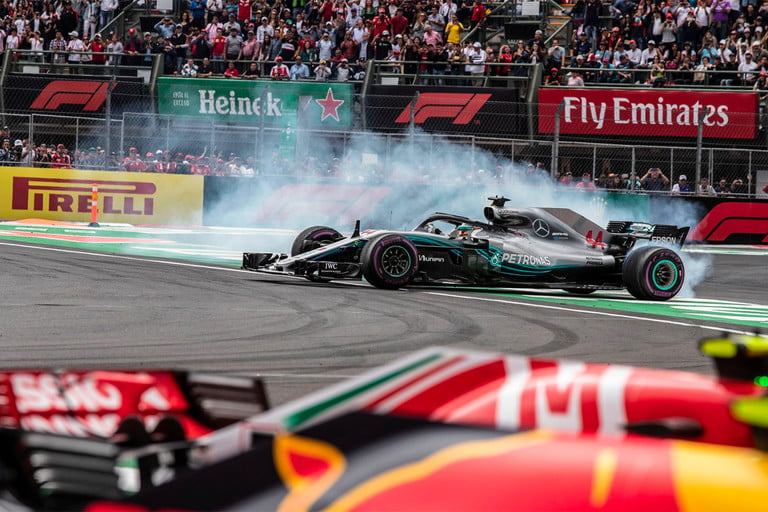
Formula E is a relatively new form of open-top racing. Unlike every other racing series in the world, Formula E is only for all-electric vehicles. Modern EV technology simply isn’t there for electric cars to race around for hours like Formula One or IndyCar racers. Formula E races have practice sessions, qualifying, and the race all on the same day. The races only last one hour and drivers must make one pit stop where they have to physically get into a different car. The budget for Formula E is much smaller than other open-top racing, as teams spend around $12 million a year.
F1, IndyCar, and Formula E aren’t the only open-top racers. There are a few amateur open-wheel series that people can watch, like Formula 1000. These vehicles race in Sports Car Club of America’s (SCCA) FB series and are powered by 1,000cc motorcycle engines. The SCCA also handles Formula 3 and Formula 4 races in the U.S.
Lastly, there’s Karting, where racers go around small courses in ultra-light, incredibly powerful, and specialized karts.
If you’re looking to get into open-wheel racing, you might want to look elsewhere. Karting is the only affordable type of open-wheel racing and it’s the jumping-off point for the majority of professional drivers. F1 and IndyCar drivers are some of the best drivers on the planet and, for the most part, they all started with karting as young children. Additionally, getting into F1 and IndyCar takes hundreds of millions of dollars of sponsors. Drivers that may be the best in the world can lose their seats if they don’t bring enough money to the table.
Sports Car
Open-wheel racing may be the most popular globally, but sports car racing is a close second. This series is probably the one racing series with the most easily recognizable vehicles as most manufacturers compete at the GT (Grand Touring) level with vehicles that look a lot like their high-performance supercars. The Lamborghini Huracan, Ferrari 488, Chevrolet Corvette, Nissan GT-R, and Porsche 911 are all used as race cars in this series. This series is also home to the prototype class, which are non-production race cars that have unique bodywork, high-performance engines, and wild designs.
In this series, races can last anywhere between 2.5 and 24 hours. Some of the 24-hour races are some of the more iconic ones in the world, including the 24 Hours at Daytona, 24 Hours of Nurburgring, and 24 Hours of Le Mans. Yes, these races really do last 24 hours and are a grueling test for both man and machine.
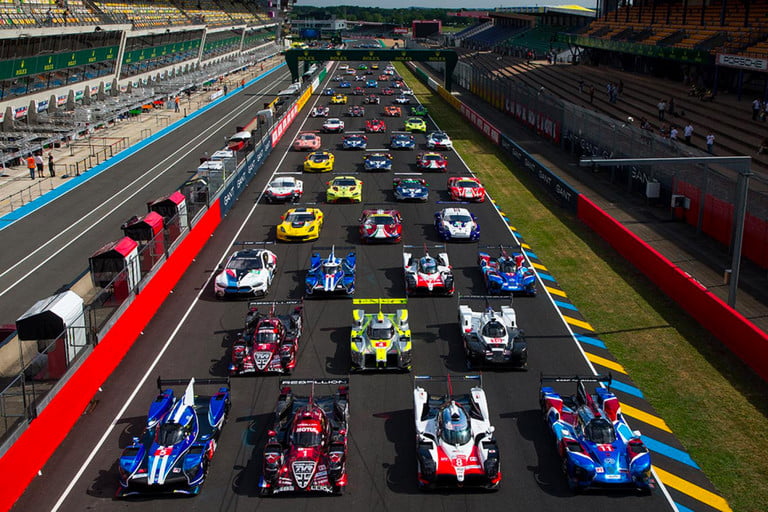
Automobile Club de L’Ouest (ACO) and the International Motor Sports Association (IMSA) are a few of the sanctioned organizations that regulate sports car racing. For the next section, we’re going to use the ACO’s class breakdowns to provide a better idea of how the ultra-fast Prototype cars share the track with GT vehicles.
The GT class of race cars is split into two categories: GTE Pro and GTE Am. As their names would suggest, the GTE Pro series includes professional drivers, while the GTE Am race cars are driven by amateur racers. The prototype class is also broken into two categories: LMP1 and LMP2. LMP1 includes hybrids and non-electrified race cars, while LMP2 vehicles come with Gibson 4.2-liter V8 engines and weigh slightly more.
The SCCA’s classes are slightly different, as the organization has two prototypes and one GT class for amateur racers. The P1 and P2 prototype classes allow for a wide range of vehicle designs, while the GT class includes modified “silhouette” replicas of series-produced sports cars.
Touring Car
Unfortunately, Touring Car racing is mostly popular in Germany, the United Kingdom, the Netherlands, and Australia. The vehicles that are raced in this serious are based on road-going production vehicles that have been heavily modified. Unlike other race cars on this list, there’s little in the way that differentiates the vehicles, so there’s plenty of hard competition between drivers.
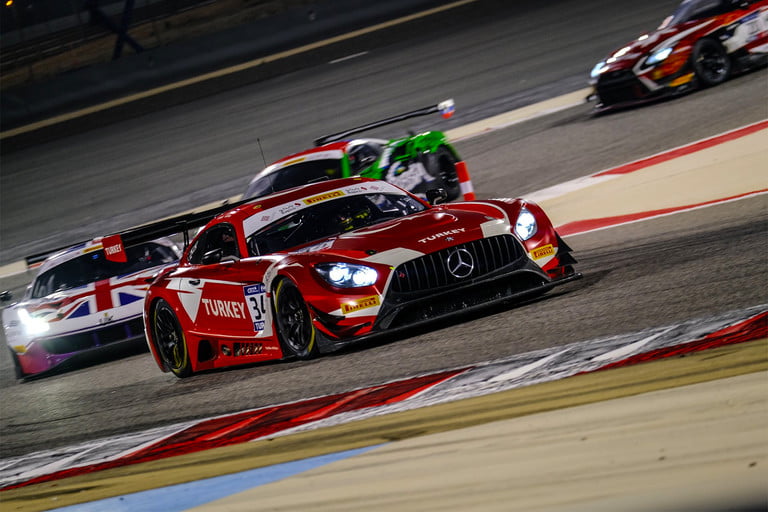
Races for the Touring Car series vary from sprints (short distances) all the way to endurances (three hours or more). There are a variety of Touring Car series for enthusiasts to watch, including Supercars Championship (SC), World Touring Car Cup (WTCC), British Touring Car Championship (BTCC), and Deutsche Tourenwagen Masters (DTM).
A lot of automakers compete in multiple Touring Car series with similar cars. Since each series has its own set of rules, the race cars may have different performance and aerodynamic requirements. For the most part, touring cars produce roughly 600 horsepower and share the same overall design as their road-going counterparts.
Production Car
This racing series is also known as showroom stock in the U.S. and is one of the more economical and easier ways for enthusiasts to get into racing. In this series, very lightly modified or unmodified vehicles race against similarly outfitted cars. The production-based road cars in this series have strict restrictions to what kind of suspension, tires, wheels, aerodynamics, brakes, and performance vehicles can be fitted with. This is done to ensure vehicles are as similarly equipped as possible for racing to remain competitive. This series is available to both professional drivers and amateurs alike.
Professional and gentleman racers can take advantage of “one-make” series where automakers have a range of vehicles that meet the necessary requirements straight from the factory. Unfortunately, a lot of these automaker-backed series are reserved for exotic car brands. A few of the more well-known series include Lamborghini Super Trofeo, Ferrari Challenge, and Porsche Supercup.
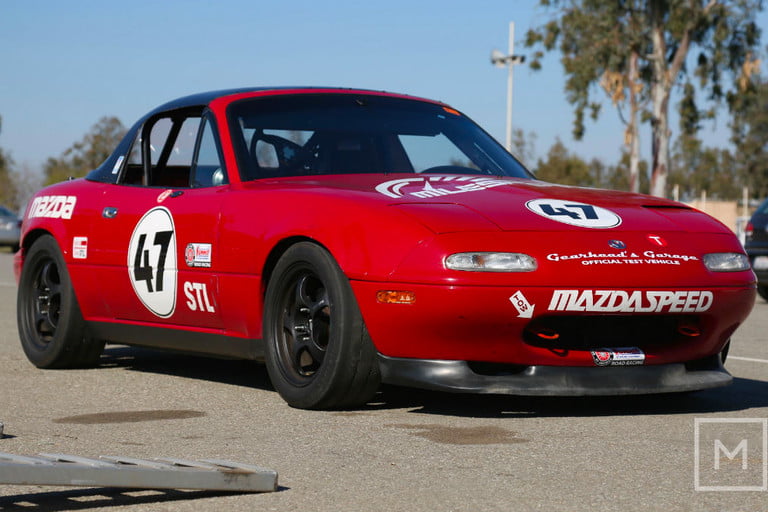
For amateur drivers, the SCAA and the National Auto Sport Association (NASA) have a few production car racing series to compete in. These series are categorized by vehicle age, engine displacement, vehicle weight, and modification level. For enthusiasts looking to go racing, this is the most popular style of amateur racing because of its ease of entry and cost-effectiveness. The majority of production vehicles that race in a series are required to have a few safety items, like a harness, roll cage, and fire suppression system. Drivers are also required to wear racing shoes, gloves, a helmet, and a suit. If you’re looking to enter your first actual race, here’s what you can expect.
Stock Car
You might be scratching your head, wondering what stock car racing is. You’ve probably heard of it as NASCAR and it’s been America’s most popular racing series since it became a thing in 1948. The story of how NASCAR came to light is one that’s worth knowing. Moonshine runners during the prohibition era made modifications to their vehicles to outrun the police while maintaining their “stock” appearance. Once moonshiners started to enter national races with their vehicles, a new racing series was born.
Things became official when a mechanic named William France formed the National Association for Stock Car Racing (NASCAR) in 1948, uniting the drivers in a single series. While modern NASCAR vehicles wear massive sponsorships, funky paint schemes, and enormous numbers, they still resemble the stock cars that they’re based on. All NASCAR racing takes place on oval tracks, while all vehicles are built on a steel tube chassis, utilize a 5.8-liter V8 engine, and come with a four-speed manual transmission.
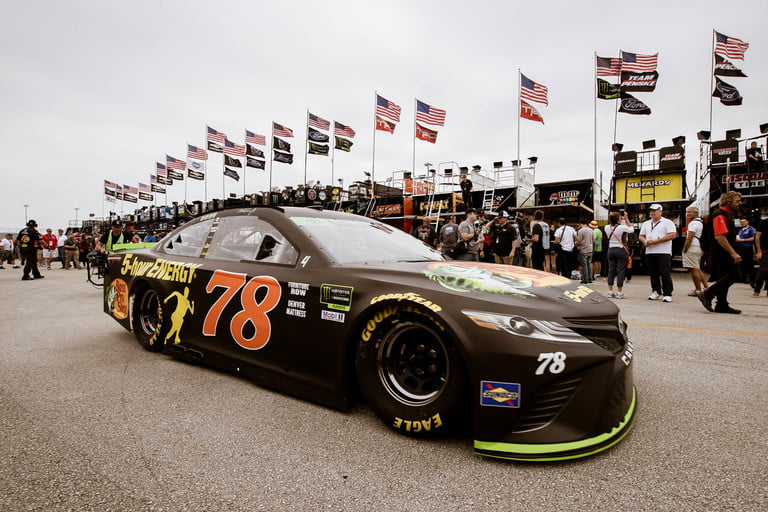
NASCAR’s oval layout may not be that exciting compared to road racing courses, but there’s plenty of action. The races can last up to 500 miles, the cars can hit speeds of 200 mph, and the race cars are inches apart from one another. This is a recipe for disaster, which is why NASCAR has quite a few spectacular crashes.
Amateur stock car racing exists, but it’s mostly a regional thing with shorter races and smaller oval tracks.
Rallying
Unlike other forms of car racing, rallying, or “stage” rallying, predominantly takes place on rough terrain like mud, sand, and dirt. Rallying also takes place throughout the entire year, so drivers have to race in the snow and rain, which results in some exciting racing. There are a few paved sections, but those are predominantly ways to connect off-road portions.
Rallying also differs from other racing series because teams have to tackle timed sections where the passenger acts a co-driving, giving the driver directions on a section. These directions are called “pace notes” and they’re a shortened code that the co-driver reads aloud to the driver so they know what’s coming up.
The most obvious series when talking about rallying is the World Rally Championship (WRC). Over the course of a year, WRX consists of 13 events that last three days each. Race cars that take part in WRC are based on production cars but have been modified for maximum attack with highly-modified 1.6-liter turbocharged four-cylinder engines, sequential manual transmissions, high-tech all-wheel-drive systems, and aggressive body kits. While rally cars may look small, they pack a massive punch with roughly 600 horsepower.

There are quite a few different types of grassroots rallying that enthusiasts can take part in, though you’ll want a car that you won’t mind getting dirty and beat up. The most common type of amateur rallying is Rallycross. Rallycross is essentially autocross on dirt terrain and can be done in practically any vehicle without any modification. This racing series is offered nationwide and all you really need is a helmet. The next step up is Rallysprint, which is a single-day event where racers cover a few small stages. To compete in Rallysprint, vehicles need to be fitted with some safety equipment like a roll cage.
Drag
Drag racing is one of the oldest forms of motor racing. While things may not have been official, drivers have always raced against one another in short drag races between the lights. Drag racing may seem easy, rev the engine, wait for the light to turn green, then floor it, but modern drag racing is far more technical than that. Timing, aerodynamic drag, and grip are everything. Brakes and stopping power also play a major role, as cars are hitting insane speeds over short distances and need to come to a stop quickly.
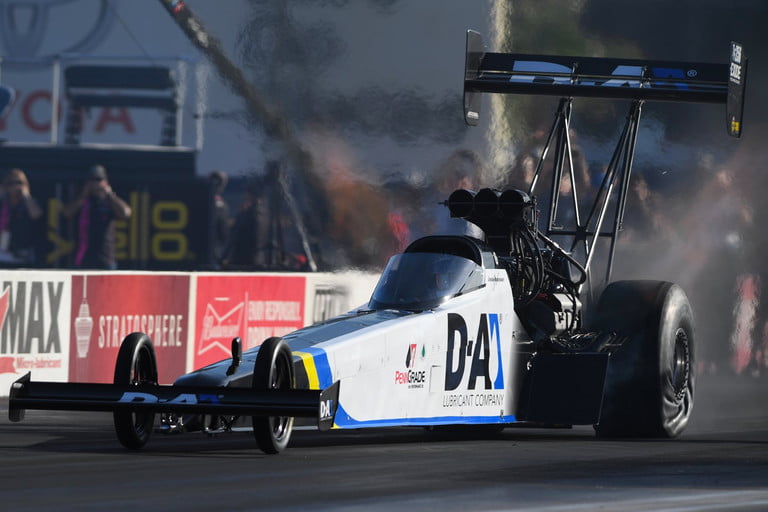
For enthusiasts that want something easy to jump into, few car racing series are as simple as drag racing. Two or more vehicles line up next to one another with an eight- or quarter-mile stretch of tarmac in front of the cars. A “tree,” which is similar to a stoplight, signals the start of the race when it goes from red to a series of yellow lights before turning green. The car that crosses the line first is the winner. Crossing the starting line before the tree turns green results in a penalty, while crossing one of the side lines results in a disqualification or a canceled run.
In the U.S., the National Hot Rod Association (NHRA) is the largest body that governs drag racing. There are multiple vehicle classes that range from lightly modified production vehicles up to dedicated dragsters with parachutes. If you’re looking for the most exciting drag vehicles, you’ll want to look at top fuel dragsters. These 25-feet long vehicles are oddly shaped with tiny front tires and monstrous rear tires. The odd design helps them hit speeds of up to 330 mph in a matter of a few seconds.
Enthusiasts can take advantage of amateur drag racing events at a local drag strip. Events range from short weeknight sessions to competitions that last the entire weekend. Drag racing is one of the easier series for enthusiasts to take part in, as all that’s really needed is a helmet. For owners of high-horsepower vehicles, going to a local drag strip is the safest and best way to see how fast their car really is.
Simulation
This type of racing has become insanely popular during the COVID-19 pandemic, as enthusiasts and gamers alike can race virtual cars from the comfort of their homes. Simulation racing, or sim racing for short, is available to anyone – even young enthusiasts without a driver’s license – with access to a computer, video game console, and steering wheel (ideally). Some may scoff at the idea of racing virtual cars, but real race car drivers regularly use simulators to learn tracks.
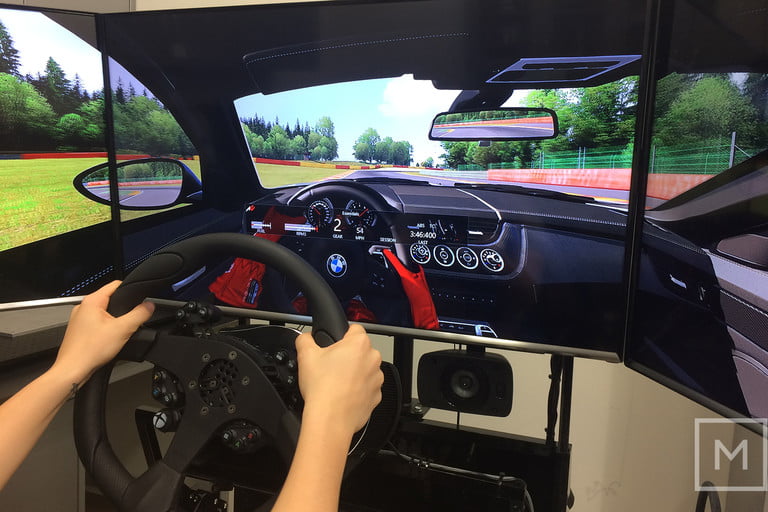
Modern sim racers account for things you’ll have to interact with when behind the wheel of a real car, like damage, tire wear, fuel usage, suspension, grip, and weather. A few companies have gone above and beyond by making hardware that recreates motions and bumps that a driver would feel in a real car. High-end racing wheel manufacturers have also created direct replicas of real racing wheels that professional drivers use, too.
Out of all of the types of car racing we’ve covered, sim racing is the most cost-effective and easiest one to get into, but that doesn’t mean it’s a joke. Racing, depending on which simulator you’re using, is fierce and you’re likely to run into both pros and amateurs that are serious competitors. Some simulators offer different types of series and the ability to race in multiple classes of vehicles, greatening its appeal.
